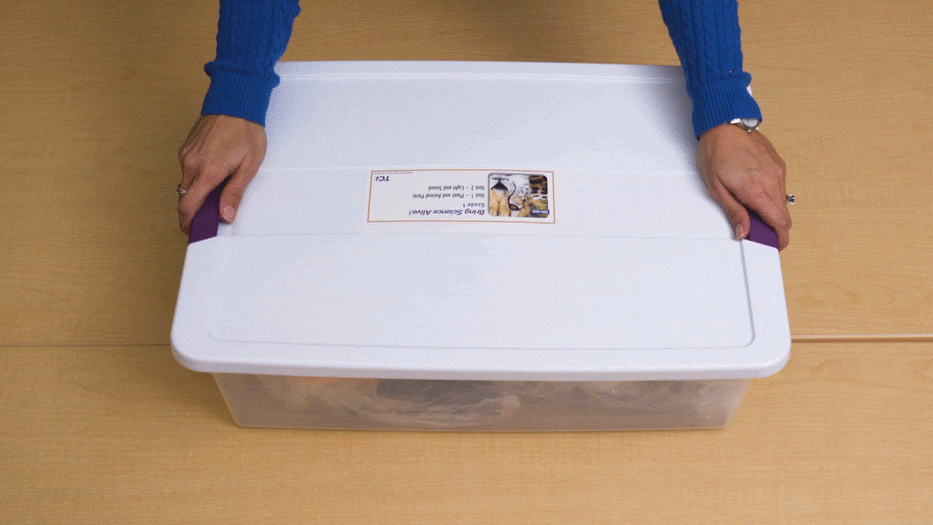How Do Plants and Animals Survive in a Rainforest?
In this lesson, students visit a rainforest habitat. They identify the plants and animals that they see and hear. Then they write a travel blog about the trip.
 |
“TCI is more inquiry-based with investigations and student-centered learning. It really allowed my students to be more engaged, take control of what they’re learning, and be at the forefront of it all.”Sara Cummings |
The Chicago Ridge School District 127-5 was looking for a new elementary science curriculum that focused on inquiry-based instruction and student discussion. Ultimately, the district decided to adopt TCI’s Bring Science Alive! Exploring Science Practices program. When second-grade teacher Sara Cummings first used the science program, she found it easy to implement.
“The program was very simple to learn. Everything is right there on the digital platform. It’s laid out in a nice format, and there was an update last year to the platform that made it even better.”
Over the years, Sara noticed that the inquiry-based nature of the program consistently engages students, leading to strong assessment scores. Additionally, she finds the program easily fits into her elementary classroom’s schedule and supports English learners.
Bring Science Alive! promotes inquiry-based science, in which students drive their own learning. At the beginning of each unit and lesson, students ask questions that they will explore through a series of investigations in which they collect and analyze data. Students are also given opportunities to construct explanations and implement their findings.
Sara finds that her students are more engaged and take charge of their learning. “TCI is more inquiry-based with investigations and student-centered learning. It really allowed my students to be more engaged, take control of what they’re learning, and be at the forefront of it all.”
With the inquiry-based approach, Sara also encourages her students to lead conversations. She observes that when students lead the science talks, they become more engaged with the content and pick up science language.
“I stepped back and allowed students to lead conversations. Not only did it help students with their science learning, but it helped with their language learning as well.”
In addition to language learning, Sara finds that with the inquiry-based approach her students score well on assessments. “My students’ science grades are always phenomenal. They always do great on their assessments.”
A common challenge for elementary school teachers is juggling many subjects. Sara fits in science instruction with daily 30-minute segments. Following this schedule, she can easily adapt Bring Science Alive! lessons within her time constraints.
“I only have a half hour for science every day. We fit it in, and we do it well. It’s easily broken up to be taught in smaller chunks, and it also can be used for a longer period of time.”
Sara acknowledges that while investigations require preparation, TCI’s material kits already do much of the heavy lifting. She organizes the materials from the kits and quickly sets them up for students.
“It’s nice that it’s all in one bin. It’s all ready for you. We can set them all up before school. I put students’ table numbers on them so they can just go grab and go. It’s fast, and they get to work right away.”

Bring Science Alive! supports literacy in science with a rich expository text that is written to be both interesting and easy to understand. The reading follows a considerate text design presented in easy-to-manage chunks for better understanding, with logical organization and vivid images to support the lesson’s main ideas. This design helps all learners grasp complex science concepts.
Sara’s district has a large population of English learners. She observes that the text is written in a way that helps all her students understand the lesson’s main ideas. “It’s nice that the language in the student text isn’t beyond their reach. The way the reading is broken up is a lot more appropriate for younger learners and for my students who are learning a new language.”
TCI’s online platform also provides reading tools that support all readers. Students can listen to text read aloud, highlight main ideas, and take notes. “The kids often do things on their own. If they are a struggling reader, the text can be read to them. If you want to utilize the online program and have struggling learners, it is adaptable for all learners.”
We are glad to hear that Bring Science Alive! has made a difference in Sara’s class and that her students enjoy the program.
In this lesson, students visit a rainforest habitat. They identify the plants and animals that they see and hear. Then they write a travel blog about the trip.
In this lesson, students build bridges with different materials. They test the bridge materials to determine their strength and whether they absorb water.
A step-by-step video guides students through investigations. Students can follow along at their own pace as they investigate questions.